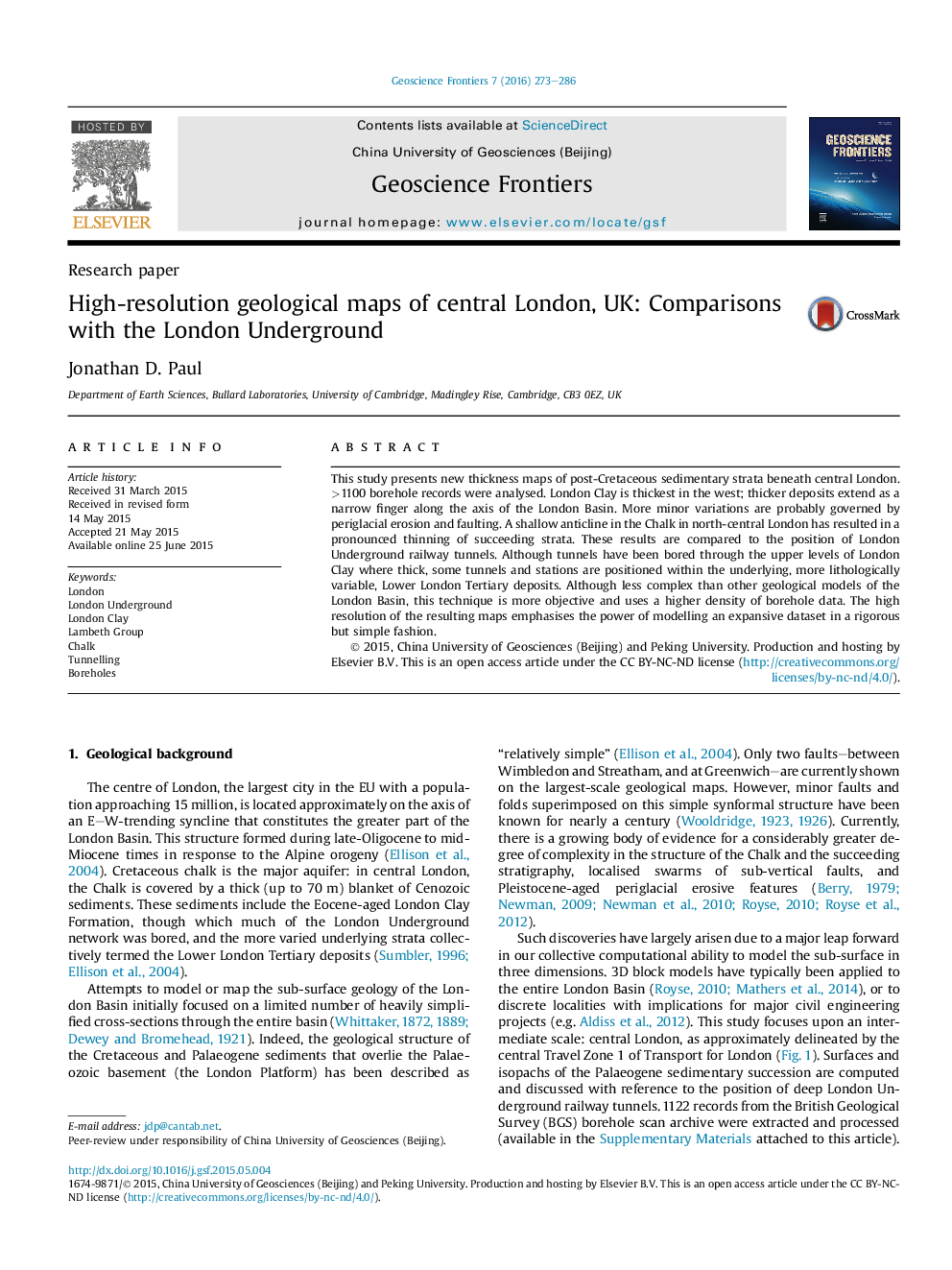| Article ID | Journal | Published Year | Pages | File Type |
|---|---|---|---|---|
| 4681546 | Geoscience Frontiers | 2016 | 14 Pages |
•Geological borehole data have been interrogated for the central London Palaeogene succession.•New high-resolution isopach maps have been constructed.•Geological structure is complex; folding in Chalk strata influences succeeding stratigraphy.•Results are compared to the position of London Underground railway tunnels.•Interpreted borehole data and metrics of the underground network are attached to this article.
This study presents new thickness maps of post-Cretaceous sedimentary strata beneath central London. >1100 borehole records were analysed. London Clay is thickest in the west; thicker deposits extend as a narrow finger along the axis of the London Basin. More minor variations are probably governed by periglacial erosion and faulting. A shallow anticline in the Chalk in north-central London has resulted in a pronounced thinning of succeeding strata. These results are compared to the position of London Underground railway tunnels. Although tunnels have been bored through the upper levels of London Clay where thick, some tunnels and stations are positioned within the underlying, more lithologically variable, Lower London Tertiary deposits. Although less complex than other geological models of the London Basin, this technique is more objective and uses a higher density of borehole data. The high resolution of the resulting maps emphasises the power of modelling an expansive dataset in a rigorous but simple fashion.
Graphical abstractFigure optionsDownload full-size imageDownload as PowerPoint slide
